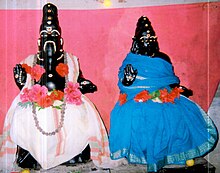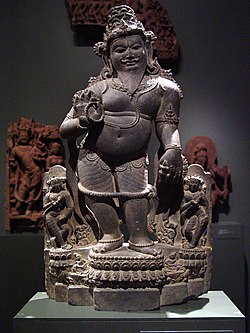
Mostly many of us don’t know about the great qualities of neem. Even if
it is known, that may be the general characteristics of the neem tree.
In his book 'Thathuvam Munnooru', Agathiyar had explained about the benefits of neem in detail in third gnana kaandam.
“பாரப்பா வேம்பினூட பிறப்பைக் கேளு
paarappaa vaembinooda pirappai kaelu
பணியனையன் பாலாழி யமுர்தம் தனை
paniyanaiyan paalaazhi yamurtham thanai
நேரப்பா பெண்ணுருவாய் தேவர்க்குப் படைத்தார்
naerappaa pennuruvaai devarkku padaiththaar
நிகரில்லா ராட்சதர்கள் பெண்ணைப் பார்த்து
nigarillaa raatsatharkal pennai paarththu
சாரப்பா மயங்கி நின்ற ரசுரர்ககளி லொருவன்
saarappaa mayangi ninra rasurarkakali loruvan
தானவர்கள் பந்தியிலே வந் திருந்த தாலே
thaanavarkal panthiyilae van thiruntha thaalae
சேரப்பா தேவருடன் கலந்திருந்த தாலே
saerappaa Devarudan kalanthiruntha thaalae
திருமாலு மூன்றகப்பை படைத்தான் கேளே
Thirumaalu moonragappai padaiththaan kaelu.”
The above script says, “Listen. I will say about the birth of Neem. When
Thirumal appeared as girl and shared the elixir to celestials using
wooden ladle, demons fell in love with the beauty of that girl. But a
demon sat in the middle of the celestial without the knowledge of
others. Thirumaal without noticing gave three wooden ladles of elixir to
the demon who sat among the celestials.
“படைத்திட்ட பெருமாலாம் பெண்ணி நோடு
padaiththitta perumaalaam penni noadu
பருதி மதி யசுரனவ ரென்ற போது
paruthi mathi yasuranava renra poathu
உடைத்திட்ட அசுரனவன் னமுர்த முண்ண
udaiththitta asuranavan namurtha munna
ஓரடியா யாகப்பையினால் வெட்டினார் மால்
oaradiyaa yaagappaiyinaal vettinaar maal
படைத்திட்ட யிரண்டாகி ரவி மதிக்கு
padaiththitta yirandaagi ravi mathikku
பகையாகி ராகுகே துக்களேன்றே சர்ப்பமானார்
pagaiyaaki raagukae thukkalaenrae sarppamaanaar
அடைத்திட்ட அகப்பையினால் வெட்டும் போது
adaiththitta agappaiyinaal vettum poathu
அவன்வா யாலமுர்த்த மாதைக் கக்கி னானே
avanvaa yaalamurththa maathai kakku naanae.”
The above script says, “Suryan (Sun) and Chandran (Moon), who were near
to the Thirumal, showed a gesture to Thirumal that he was giving elixir
to demon. Thirumal had cut off demon’s head from his body using the
wooden ladle. Hence demon(s) Raagu(head) and Kaethu(body) had become
enemies to Suryan and Chandran”. Demon spitted the remaining elixie
when he was cut by the wooden ladle.
“கக்கும்போ தமூர் தமது லிங்கம், போலக்
kakkumpoa thamoor thamathu lingam, poala
காசினியில் விழுந்ததுவே வேம்பு மாச்சு
kaasiniyil vizhunthathuvae vaembu maachchu
முக்கியமாய்க் கசப்பு வந்த தேதென்றாகால்
mukkiyamaai kasappu vanhtha thaethenraagaal
சக்கியமாய் வேம்பு தின்றால் சாவோ யில்லை
sakkiyamaai vaembu thinraal saavoa yillai
சனகாதி நால்வருடன் யானுந் தின்று
Sanakaathi naalvarudan yaanum thinru
அக்கண மேசித்திபெற் றவேம்பு நேர்மை
akkana maesiththipe travaembu naermai
ஆரறிவா ருலகத்தோ ரறியார் காணே
aararivaa rulakaththoa rariyaar kaanae.”
The above script says, “When demon spitted, the elixir fell on the Earth
became neem tree. The reason why neem got bitter taste is because it
has came from the demon’s (snake) poisonous mouth. If you eat neem
regularly then there is no death for you. Like this I ate neem with four
Sanakaathi’s (my masters) and attained kaaya siddhi*. Who in the World
knows such a great values of neem?”
*Kaaya Siddhi - 'Kaayam' means body. Siddhi means power that can be
attained. Hence kaaya siddhi can be meant as the power of attaining
immortal body.







